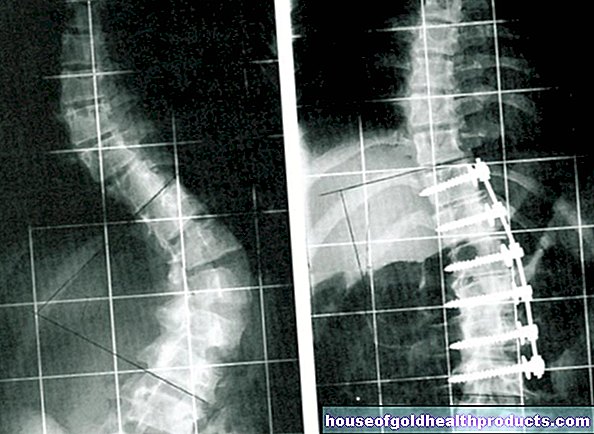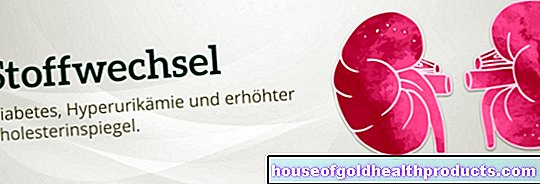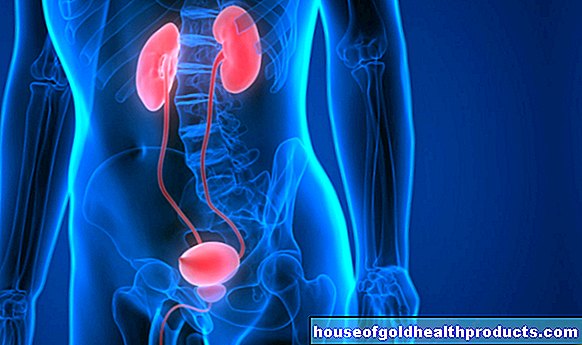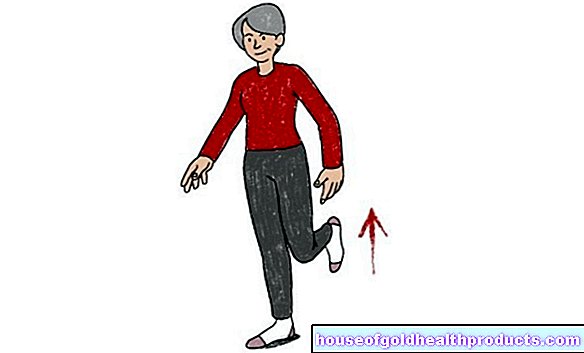Lysine
Updated on All content is checked by medical journalists.The amino acid lysine is one of the most important ingredients in nutrient solutions for artificial nutrition. It is needed in the body to build muscle and other amino acids. It is also involved in bone growth, cell division and wound healing. As a so-called "essential" amino acid, the substance must be taken in through food. Here you can read everything you need to know about lysine!
This is how lysine works
In order for the body to function, it needs proteins. They build up the muscles, are also found in every body cell and transport substances there, regulate chemical reactions and form docking points (receptors) for a large number of messenger substances.
Proteins consist of so-called amino acids, which are either produced by the body or ingested with food. This leads to the division into "non-essential" (produced by the body) and "essential" (taken in through food) amino acids.
Lysine is one of the essential amino acids. A sufficient supply of this amino acid is particularly important during pregnancy and breastfeeding, as it promotes bone growth and cell division.
In addition, the substance plays an important role in wound healing because it is involved in building collagen (building block of connective tissue) and stimulates cell division. A deficiency - regardless of age - can lead to reduced enzyme activity, growth disorders and a weakened immune system.
Animal proteins are the main source of lysine: foods such as meat, fish, eggs and dairy products provide the body with sufficient amounts of the amino acid. To a lesser extent, it is also found in cereals, pulses and nutritional yeast. Vegans who strictly avoid all animal foods often have to take preparations with lysine to meet their needs.
Uptake, breakdown and excretion
After ingestion through the mouth (orally), the amino acid is absorbed into the blood via special transporters through the intestinal wall and distributed throughout the body. Any excess is excreted through the kidneys.
When is lysine used?
The amino acid lysine is not a medicinal substance. However, it is used as a protein component or dietary supplement in the following areas:
- Artificial feeding by tube or infusion
- Strengthening the immune system
- Effective accelerator for the pain reliever ibuprofen
- Herpes infections
Very few studies are available on the use of lysine against herpes. It is assumed, however, that lysine displaces another amino acid (arginine), which the herpes viruses need for growth. This is how lysine can alleviate herpes and its symptoms.
This is how lysine is used
In artificial feeding, the amino acid is administered in combination with other nutrients via tube or infusion. Lysine capsules are usually available as a dietary supplement.
The daily requirement is 38 milligrams of L-lysine per kilogram of body weight. L-lysine is the form of the amino acid that the body can use. However, it only makes up 50 percent of the D, L-lysine mixture that is found in some preparations. The body can therefore only utilize half of this.
For the treatment of herpes, a daily dose of 1.5 to 3 grams of L-lysine is usually recommended - divided into three individual doses, each taken before a meal.
What are the side effects of lysine?
With a regular overdose, lysine can cause side effects. In addition to kidney dysfunction, this also includes blood clotting disorders and blood sugar fluctuations.
What should be considered when taking lysine?
Infusions and tube feeding with the amino acid for artificial nutrition can also be given to children and adolescents. If the amino acid is to be used as a dietary supplement in children, a doctor should be consulted beforehand.
pregnancy and breast feeding period
The use of lysine in "therapeutic doses" (ie amounts which in some cases significantly exceed the daily requirement and are intended to be used for the treatment of diseases) is not recommended, as there is no experience on this. In case of doubt, the individual benefit of an application should be weighed up against the possible risks by a doctor.
How to get drugs with lysine
Infusions and tube feeding with the amino acid require a prescription. You can get them with a doctor's prescription at the pharmacy.
Dietary supplements are available over the counter and in pharmacies.
How long has lysine been known?
Lysine was first isolated from a milk protein (casein) in 1889. Since then, the composition of proteins has been studied very carefully and their functions in the body have been researched.
What else you should know about lysine
The pain reliever ibuprofen can only develop its effect after it has dissolved in the intestine, because only then can it be absorbed into the blood through the intestinal wall. Lysine can speed up the dissolution of the pain reliever in the intestines.
Thanks to this lysine effect, ibuprofen is absorbed into the blood faster and its pain-relieving effect sets in after about ten to 15 minutes.
Tags: symptoms organ systems unfulfilled wish to have children





























